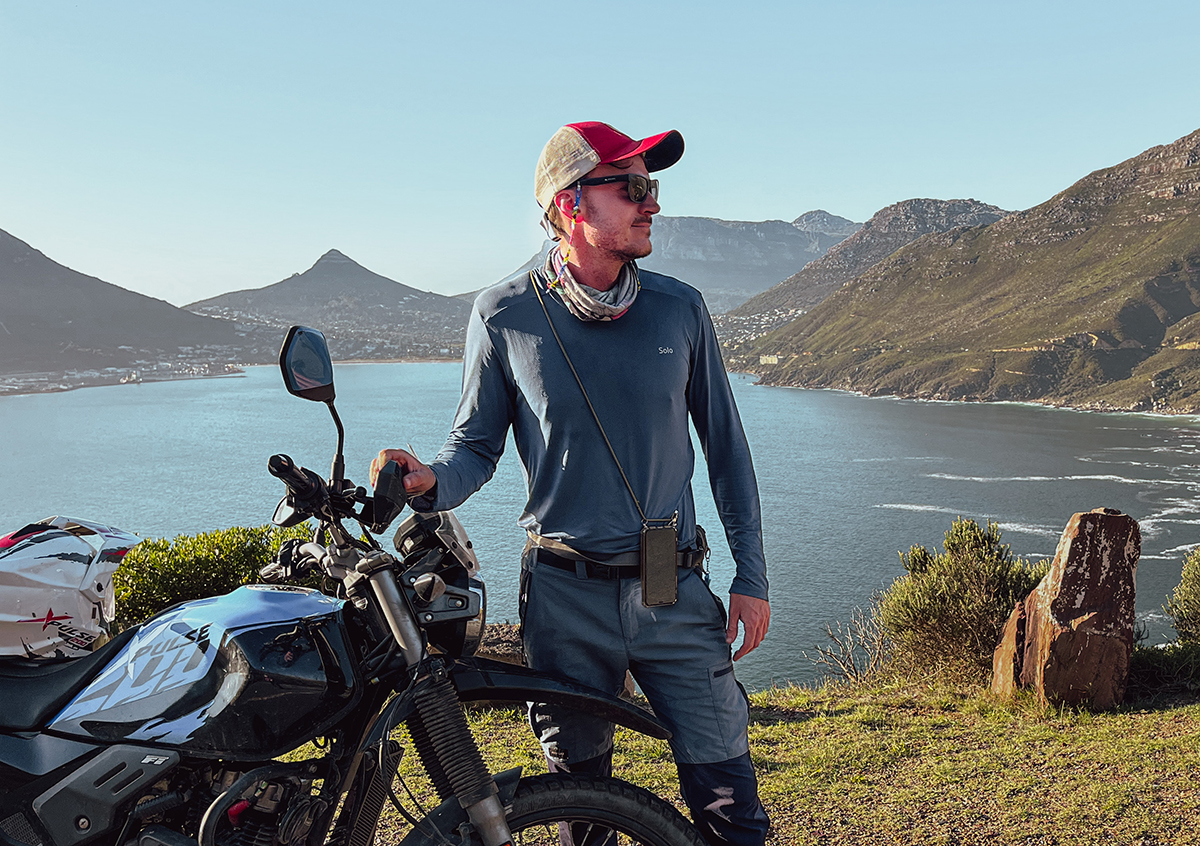
Gabriel Turano is a Brazilian traveller and adventurer. He is one of the lucky few who had the courage to leave a good job in order to pursue a more personal journey, a journey of discovery and, hopefully, change, not only for himself but for everyone he meets along the way. Having visited more than 50 countries on four continents, he is now travelling through South Africa on a Hero motorcycle and, from time to time, sends reports on his progress and experiences. Here is the latest submission. For more information on Gabriel, visit www.gabrielturano.com
The Journey with Gabriel Turano
It was February 21st, 2023, and after a little over 30 days in Brazil, it was time to hit the road again. Well, not exactly hitting the road with my feet this time, but with my wheels.
I was heading to South Africa, coincidentally exactly one year after my last visit to the country. During my previous stay, I hadn’t fully enjoyed it as I would have liked. There were two reasons for that: firstly, I volunteered in a small village on the famous Garden Route called Wilderness. Secondly, there were challenges involved in getting around the country.
This journey was different. Over the course of a year, I had been discussing a partnership with Hero SA, an Indian motorcycle manufacturer with a strong presence on the continent. Apart from having conditions to buy/rent a big motorcycle or even receiving offers from other brands, I saw in the XPULSE an excellent project in terms of addressing Africa’s needs with a reliable motorcycle. We will discuss it further, but qualities such as low weight, robustness, fuel efficiency, and easy access to spare parts have convinced me.

My journey began with a gruelling 35-hour transit. Due to the pandemic, flights crossing the Atlantic between Brazil and Africa had been suspended, and the few remaining options forced me to head northwest towards Europe or the Middle East before pointing south. To Africa!
I arrived at Johannesburg airport, which, although not the capital of the country, is one of the main cities due to its historical importance in mineral exploration, especially gold. The city is situated at an altitude of almost 2000 meters, and fortunately, I arrived during a season with more pleasant temperatures, although still facing challenges with rain.
It was late afternoon, and I made a brief visit to the Hero dealer in JHB. I had the opportunity to meet the entire team that would support me with any possible needs in the following weeks, and most importantly, meet my beautiful Lucile, the name I gave to my XPULSE. Following the tradition of boats, to avoid bad luck during my journey, it was forbidden to give my faithful companion a male name.
Summing up the expedition, it lasted for 45 days, covered three countries, and encompassed over 5500 km in this initial journey. The first few days of riding through the northwest were challenging. South Africa was facing heavy rains that left parts of the country in disarray, making my motorcycle ride through flooded and pothole-ridden roads more exciting, but also more dangerous.
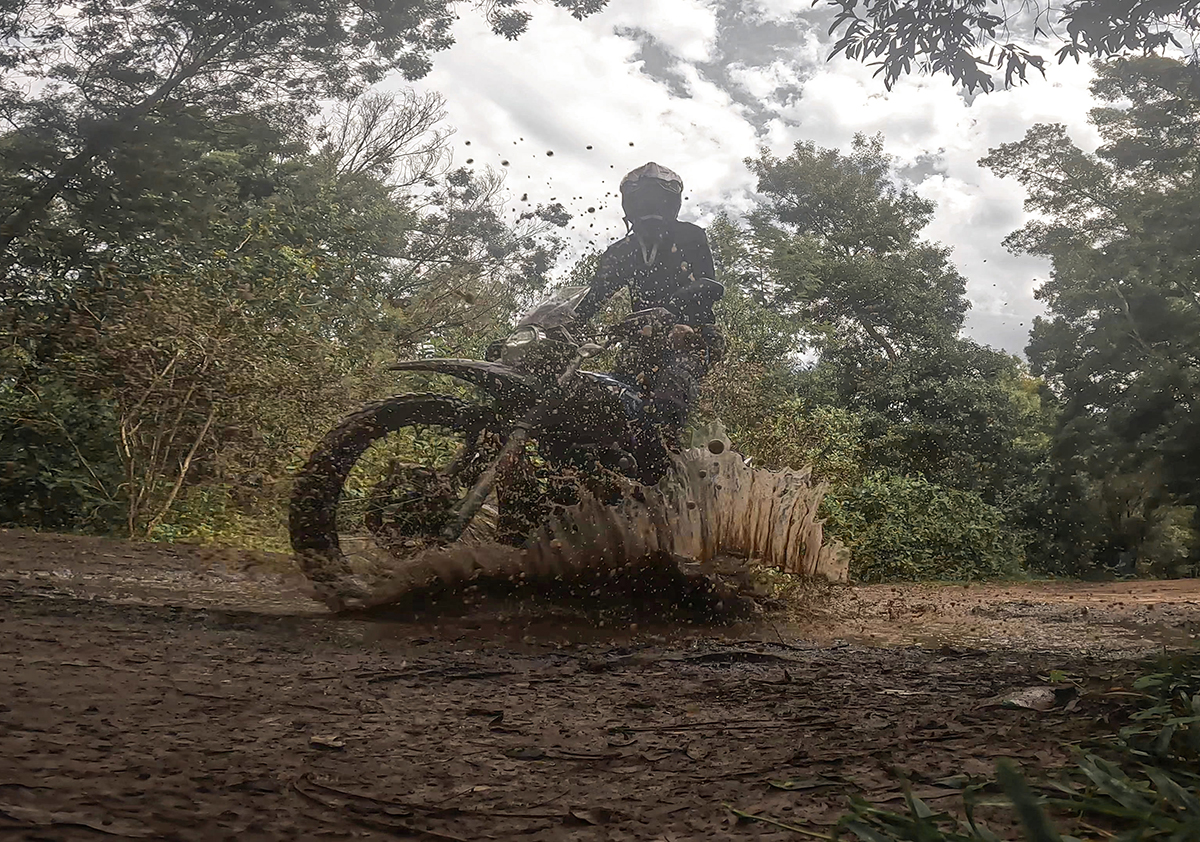
In the first few days, I passed through Groblersdal, Tzaneen, and Graskop. Unfortunately, I couldn’t enjoy the scenic routes of these destinations due to the rain. However, things started to improve from Graskop, near the border with Eswatini. I crossed the border on February 27th, six days after the start of this journey. I used the Jeppes Reef border at the suggestion of the locals, and from the first few kilometres, I could already tell that I was indeed in a new country, although paradoxically still “within South Africa.” It was a little over 120 km from the border to my accommodation, and the roads I travelled on were envied by many motorcyclists. Mountain ranges loomed on my horizon, and the higher I climbed in altitude, the fiercer the wind became, and the temperature dropped.
My accommodation, also suggested by the locals, was located within a nature reserve, teeming with abundant wildlife. As I rode my motorcycle through, I encountered zebras, impalas, warthogs, wildebeests, and various other animals. The BIG 5 (lions, elephants, rhinoceroses, buffaloes, and leopards) were not present there, so it was allowed to go on a bush walk and explore the savannah autonomously. And that’s exactly what I did! I even had the chance to admire crocodiles in the nearby lake.
After a few days of enjoyment, it was time to move on. I entered Eswatini from the north and exited from the far south. My intention was to reach a city called Mtunzini, located on the Eastern Cape coast, still bathed by the Indian Ocean. Due to the distance involved, I took a rest stop in Hluhluwe. It’s a region with a high concentration of game reserves that offer safaris to visitors. The weather in this region continued to be moody, and I had to navigate through flooded areas. It was also there that I saw giraffes for the first time on this expedition, albeit through fences.

I continued my journey to Mtunzini and had to face the dreaded N2, packed with trucks carrying coal to the port of Richard Bay. The traffic was so intense that I drove on the shoulder for almost the entire route, avoiding the wrath of the drivers. Mtunzini is located 140 km north of Durban, one of the major cities in the country. Also based on recommendations from locals I had received days earlier, I found a camping site within a national park (Umlalazi Wildlife). I was the only one staying there. The beaches in the area are wild and not suitable for swimming. I contented myself with walking along the extensive stretches of sand and admiring the beautiful landscapes. On one side, a vast ocean; on the other, dense forests and rivers flowing into the sea.

From the coast, it was time to head back inland. One of my plans was to visit the famous mountain range known as the Drakensberg (Dragon Mountain). It stretches into the Kingdom of Lesotho, which was also my destination as I planned to cross the iconic Sani Pass (a mountain pass leading to Lesotho). The distance was once again quite far, so another stop was necessary. I chose Mooi River via R614, avoiding major cities like Durban. The road was also quite scenic, despite dark clouds accompanying me throughout the journey.
I found accommodation outside the city, where the owner was working hard to recover from the recent rains. The river located a few meters below the accommodation had flooded and destroyed part of its structure. The next day, after researching access routes to Underberg, the base town for the famous Sani Pass, I opted for Nottingham Road. It was 100% off-road and quite deserted along the entire route. I had difficulty crossing it due to the mud and especially the flooded areas. I rode for dozens and dozens of kilometres without encountering any signs of life. I spent the day on the road, and I remember the fear I felt during this particular episode. Riding in desolate, flooded, and muddy places, with no support in sight if anything were to go wrong. But the fear that kept me responsible, cautious, and clear-headed throughout the journey eventually turned into pure happiness.
The Underberg region has so many merits that it’s hard to put into words. There are scenic roads that wind through the mountain ranges of the area. I found a retreat just 7 km from the South African border, very close to the Sani Pass.
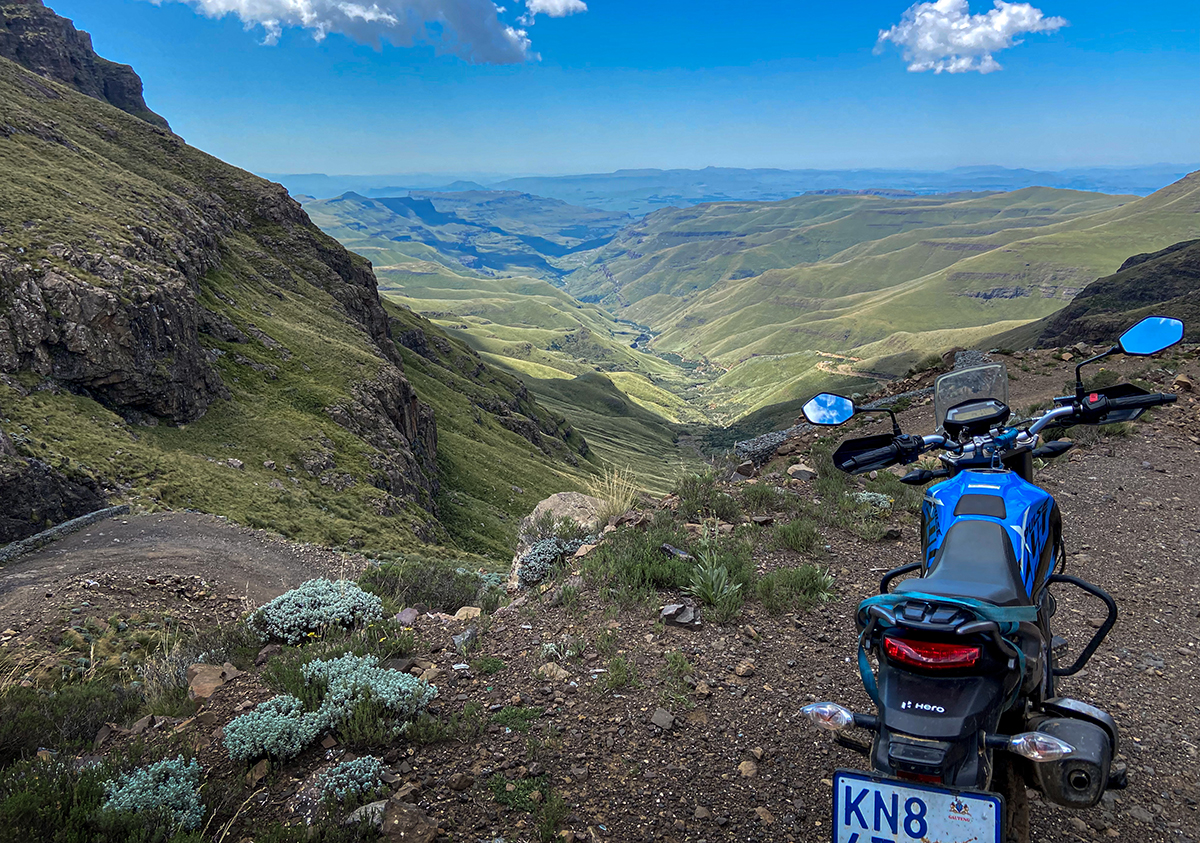
It is essential for the ascent to occur on favourable days to avoid any complications. The next morning, I woke up in the dark, left all my belongings at the accommodation, had a nice breakfast, checked the weather forecast again, and set off to finally face the long-awaited Sani Pass. After getting my passport stamped, it was a 9 km climb on a gravel road to Lesotho. Due to the challenging and somewhat dangerous nature of the terrain, only 4×4 vehicles and organized tours are allowed to proceed. And there I was, on a motorcycle, climbing the place I had been eagerly anticipating.
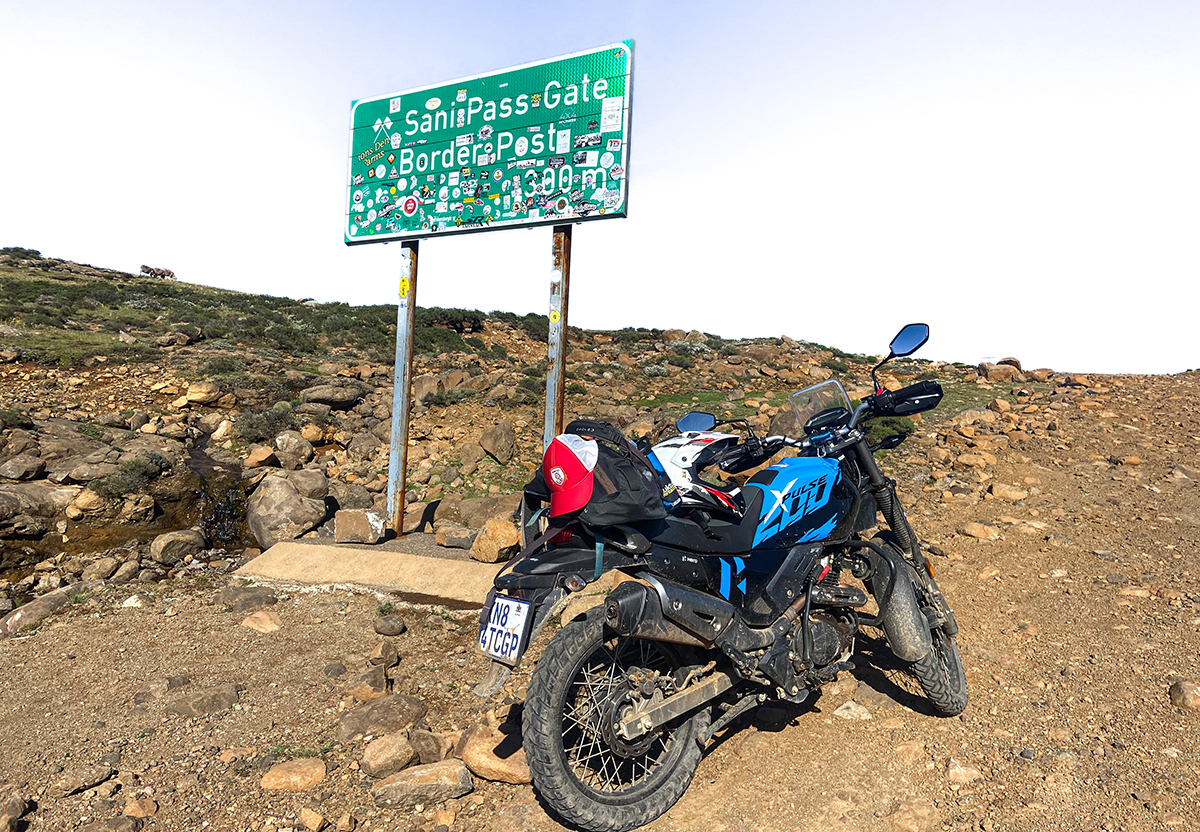
It took just over an hour to complete the 9 km and get my passport stamped at the Lesotho border. I entered the country and was captivated by its natural beauty. I reached the highest point at 3240 meters above sea level and felt the power of the thin air not only on myself but also on Lucile. I spent the day exploring, talking to locals, and covering some kilometres within Lesotho.
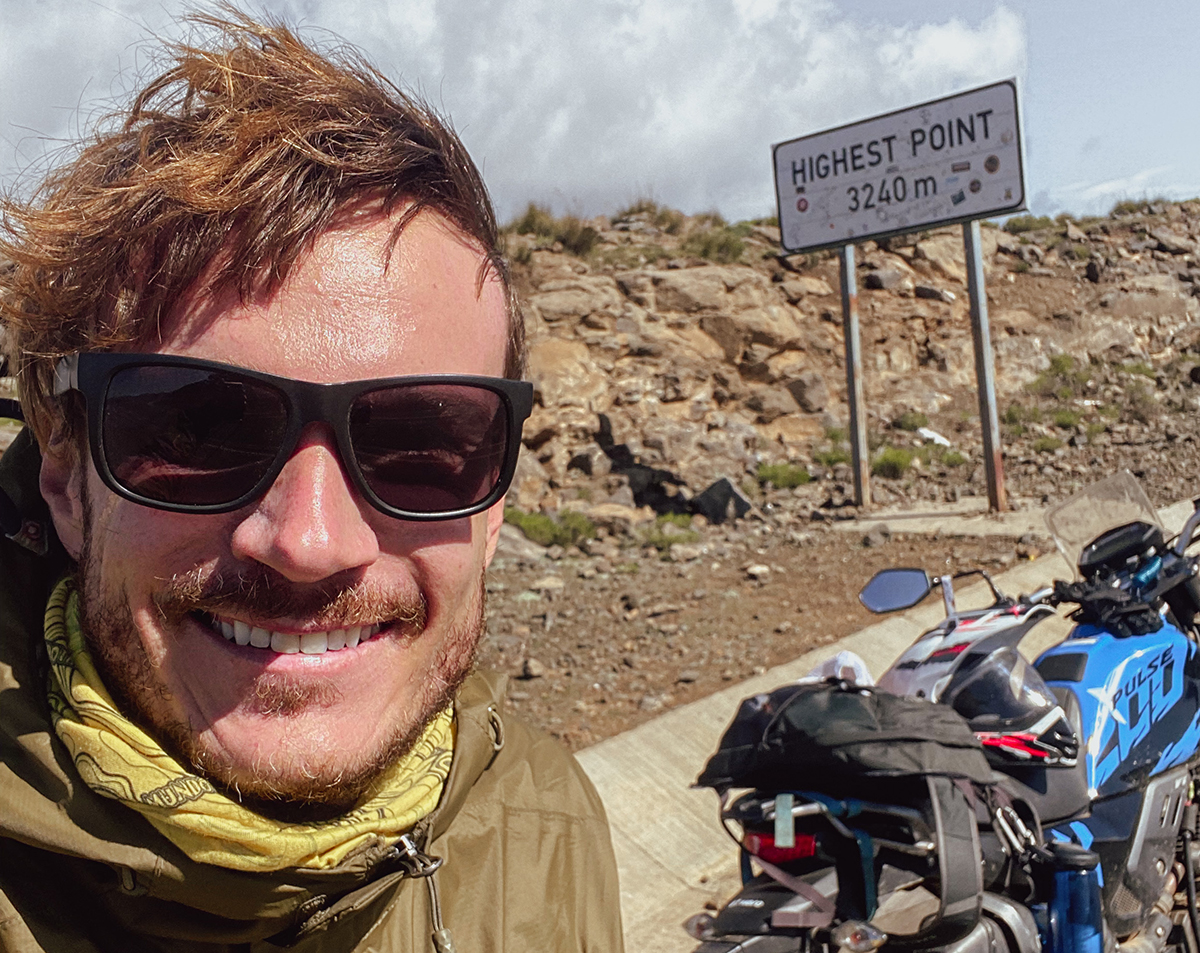
The cloudy sky soon replaced the blue that had accompanied me. I decided to begin the journey back to Underberg. And so, I descended the steep 9 km of the Sani Pass.
Once again, my decision to acquire a lightweight motorcycle for the adventure I set out to do proved to be the right one. It would have been overly challenging to climb the Sani Pass with a heavy and unwieldy vehicle.
The following day, I headed back to the coast. I had heard a lot about the Wild Coast, located on the eastern coast of the country and home to one of the most prominent tribes, the Xhosa. In fact, it’s the same tribe that Mandela belonged to.
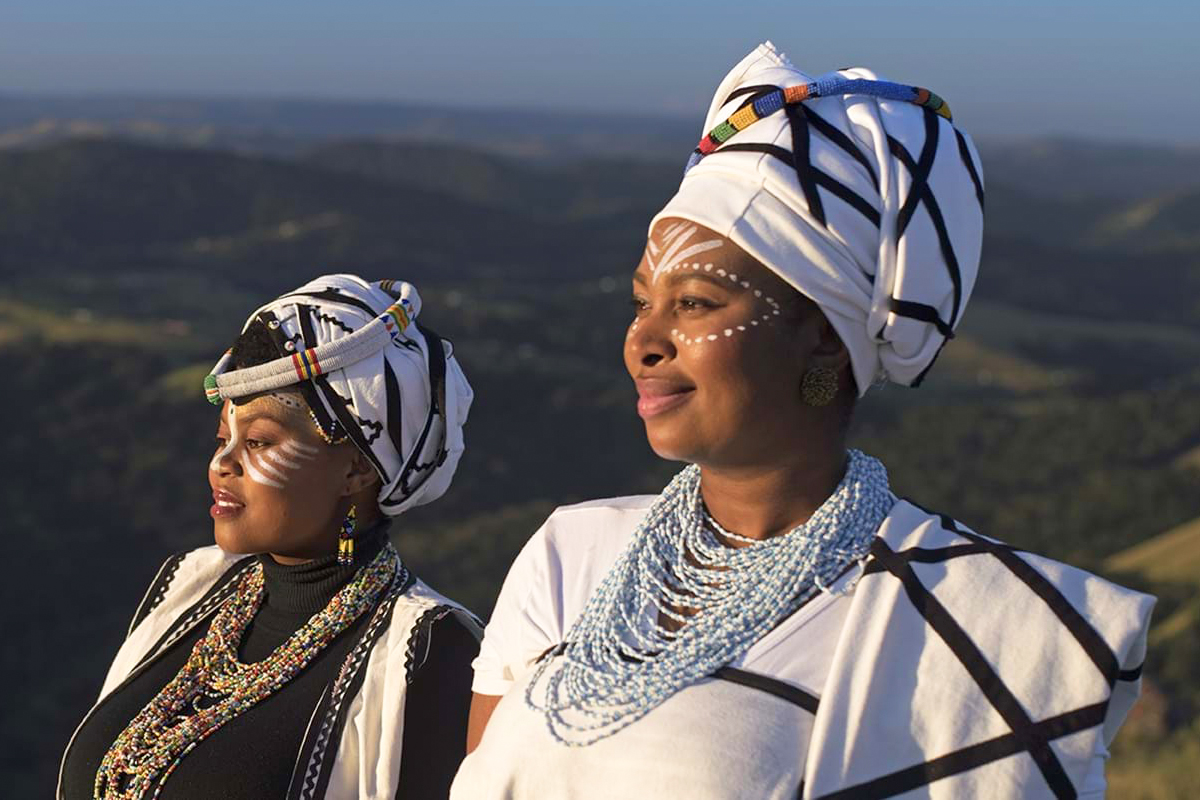
I must confess that it wasn’t a pleasant journey. I had concerns about passing through Mthatha, a city known for its high crime rates. Just a few kilometres before entering the city, I was stopped at a police checkpoint, and their intention to alert me only heightened my worries about passing through the inevitable city.
With due caution and benefiting from the agility that Lucile provided me, I quickly crossed the city and finally reached the last stage to Coffee Bay, the destination I had chosen on the Wild Coast. Although tired from the trip, I had fun on the terrible roads that connect Mthatha to Coffee Bay. Much more agile and faster than buses, cars, and trucks, I made up for lost time on the highways.
Unfortunately, paradise, as Coffee Bay is known, had turned into a scene of destruction. Just days before my arrival, the region experienced heavy rains and strong winds, causing trees to fall and bringing a lot of debris from the sea onto the beach. I even found a shipping container on the beach near my accommodation. I lamented the suffering of the locals, but I couldn’t help but enjoy the beautiful landscapes that the place still offered.

I decided to take a few days to rest before hitting the road again. My goal was Addo National Park. I’m passionate about the largest land mammal on the planet and couldn’t miss the chance to visit the home of elephants in South Africa. It would be quite a long journey, so I decided to make a stop in Morgans Bay. The town isn’t popular among foreign visitors to the country. Since there are no roads connecting the coast in this region, it’s necessary to ride a few kilometres inland before heading west. The bad weather continued to accompany me, but fortunately, I managed to avoid the rain. The South African coastline is wild and known for its strong winds. To reach Morgans Bay, I had to cross the Great Kei River, which runs for 320 km before flowing into the Indian Ocean. In the absence of a bridge connecting the mainland, I made the crossing on a small ferry.
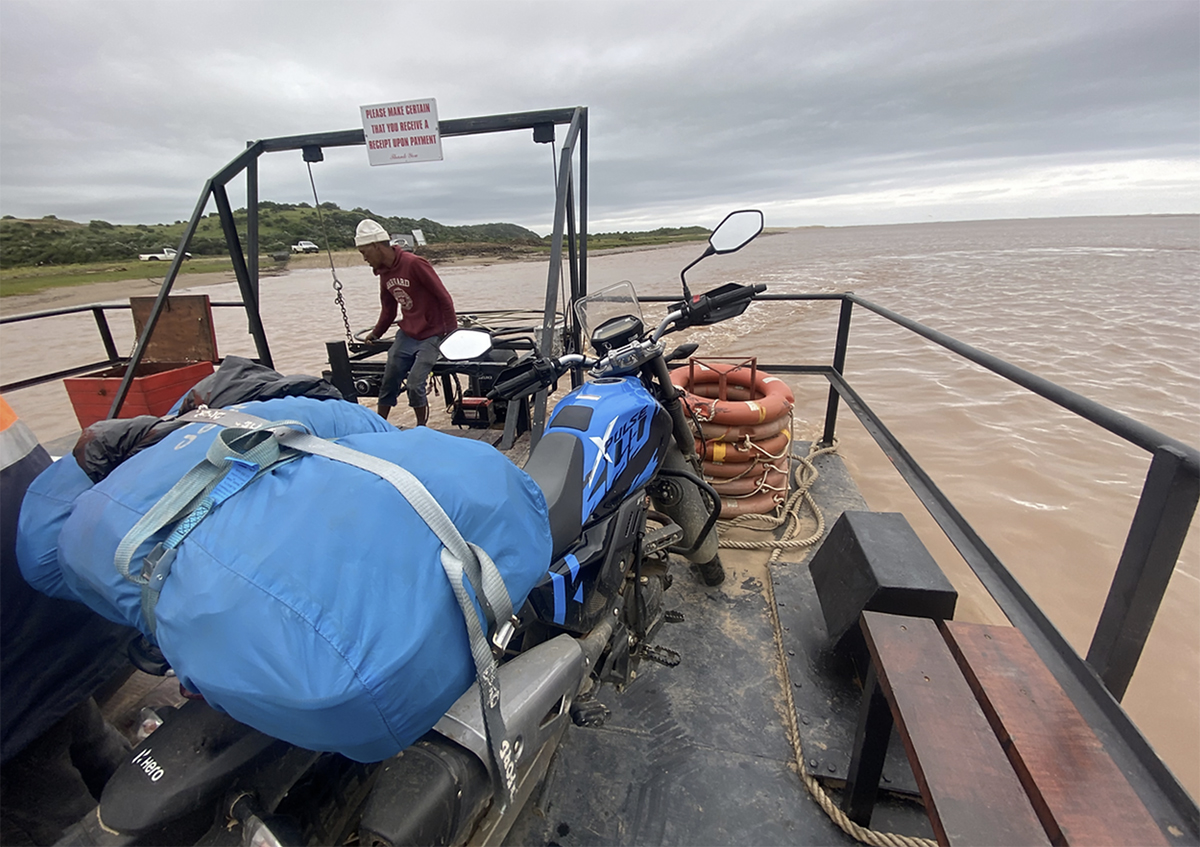
Although my stay was short, it was extremely enjoyable. There are various cliffs around the town that are worth a visit to appreciate the surrounding sea. In the presence of local residents, I witnessed low tide fishing. As my goal was to visit Addo, the next morning I hit the road again towards the national park.
I found accommodation a few kilometres from the Addo entrance gate and took advantage of the proximity to book a sunrise game drive. Later, I realized that it was a mistake as elephants tend to be shy during sunrise.
On the night before my visit, the accommodation host invited me to a South African braai. In Brazil, as we know, barbecue is quite popular, but the quality of South African meat is impressive, even to us Brazilians. Before the first rays of the sun, I was already riding in the freezing morning towards the park’s main gate.
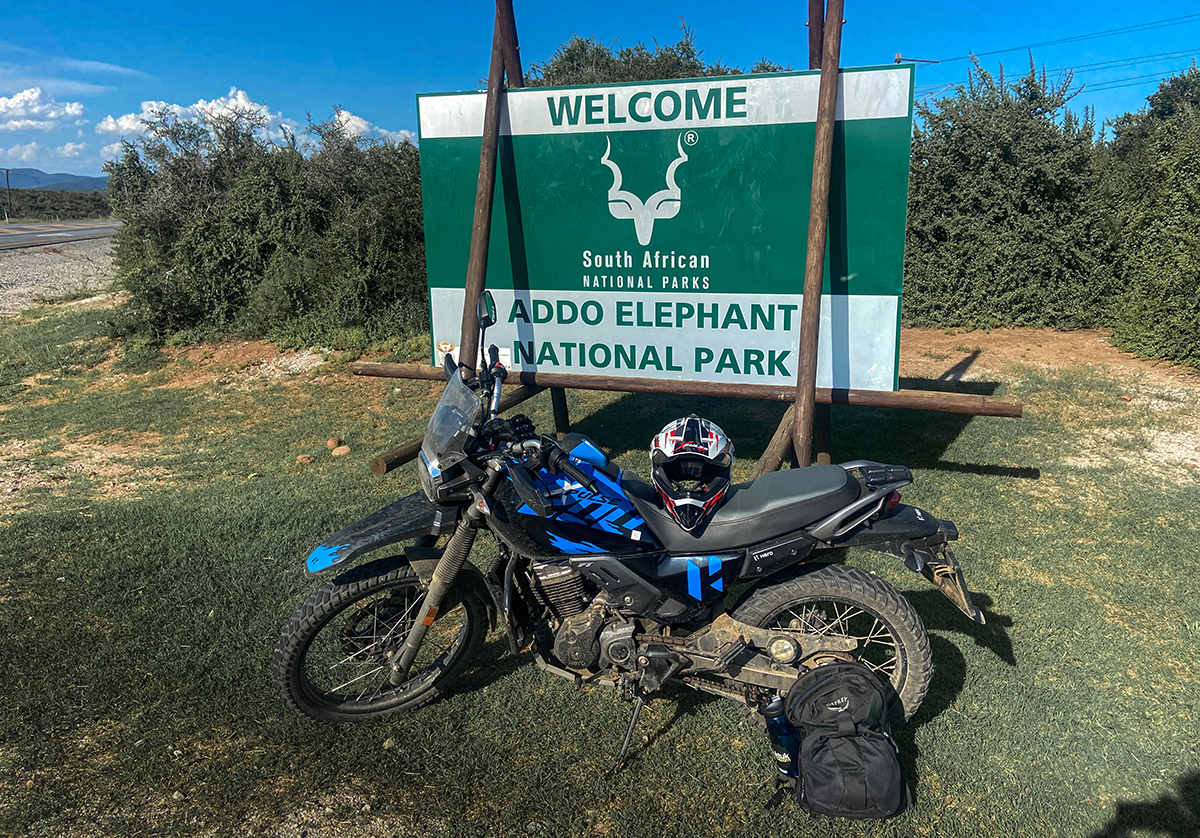
Unfortunately, I didn’t manage to spot any elephants among the 500+ that inhabit the park. It would have been comical if it weren’t tragic for someone who had been looking forward to this encounter. But that’s precisely the beauty of a safari: its unpredictability.
It was time to head to more pleasant temperatures and explore a region well-known not only to South Africans but especially to foreign visitors to the country. Jeffreys Bay was my next destination.
Just over a hundred kilometres connected Addo National Park to this coastal town. It was a rewarding journey, passing through small towns and roads with lush vegetation. I was entering a region that I had been eager to visit and had little opportunity to enjoy during my previous trip to the country.
Jeffreys Bay breathes surf. It is home to one of the World Surf League (WSL) stages, and the beach is known for its tubular waves. During the championship, you can get close to all the professional surfers who travel the world in search of the best waves.

Although the place is known for its powerful waves, the beaches are also beginner-friendly. Many foreigners visit Jeffreys Bay to learn to surf.
It was time to slow down and enjoy the journey more. I spent a few days in the town, soaking in the vibe, enjoying a cold beer, and connecting with other travellers. It was a well-deserved rest for someone who had faced challenging roads and dealt with bad weather for long, long days.
From Jeffreys Bay, I continued heading west towards Nature’s Valley. In my opinion, one of the most beautiful regions along the Garden Route. Since I had already visited Tsitsikamma National Park, I decided to spend only one day in the region before continuing my journey. I was eager to return to Wilderness, a small town that had been my home for just over a month a year earlier in 2022.

Wilderness is a welcoming town and a paradise for nature lovers. I stayed there for almost a week, enjoying all the activities the region has to offer, including Wilderness National Park. I also visited the Map of Africa, two mountains resembling the African continent, and observed dolphins on the town’s beach. It’s also possible to have fun exploring the various off-road and gravel roads.
From Wilderness, I rode two passes that I had been looking forward to Montagu Pass and Swartberg Pass. It’s difficult to choose the best adventures on this journey, but these two passes were undoubtedly memorable. Along with the Sani Pass and another adventure that I will tell later, they may have been the most epic places I visited with my Lucile.

I chose to stay in Oudtshoorn as I planned to continue to the Karoo via the famous Route 62, a semi-desert region. As I mentioned before, it’s hard to pick the most epic places on this journey, but Route 62 is certainly one of them. Here, the feeling of “nothingness” is present with every kilometre ridden. The area is extremely remote but shines brightly with the beauty of the desert. I knew there was a campsite with hot springs a few kilometres from Barrydale, so I decided to spend two nights there, enjoying the hot water pools. As always, I was warmly welcomed by South Africans, who were always curious about my journey.
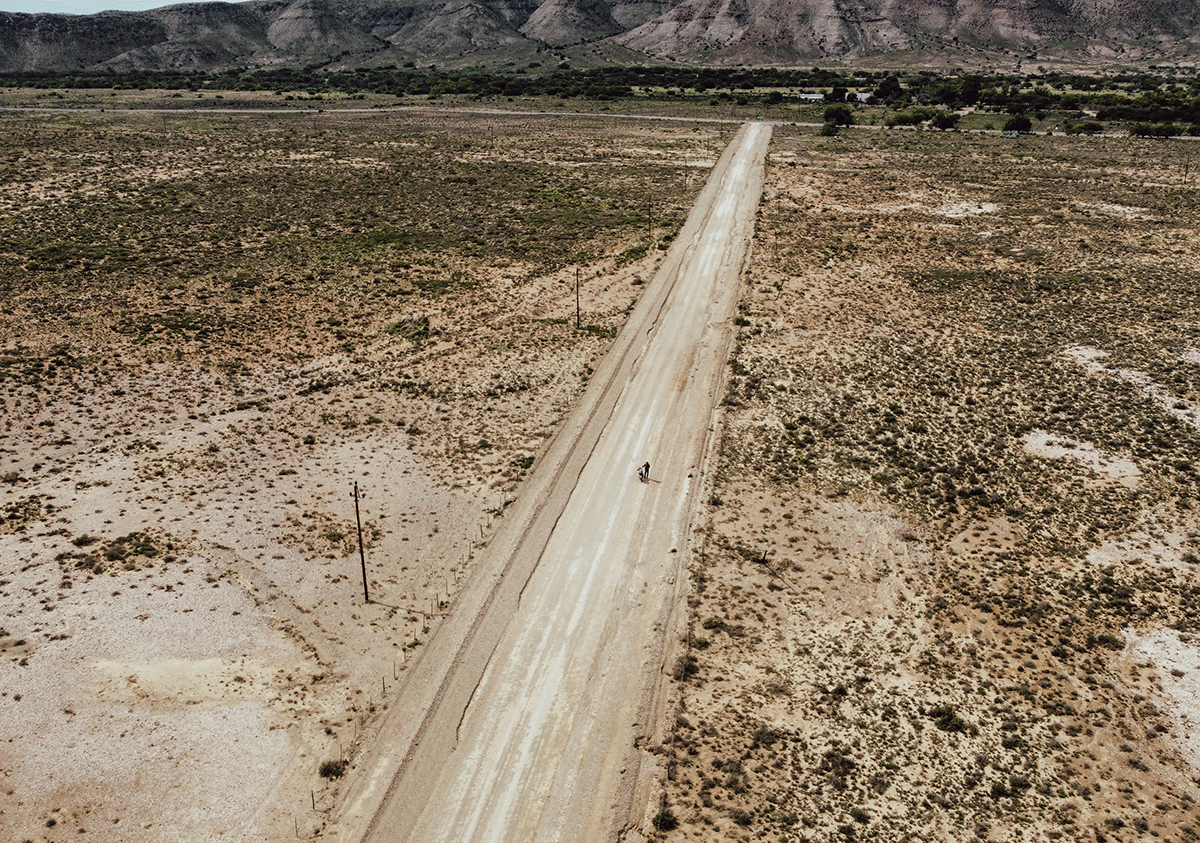
From Barrydale, I continued along Route 62, passing through iconic towns like Montagu and Robertson. Here, I was heading to my final destination in South Africa: Cape Town. My heart was already feeling a bit heavy, but I knew there were still great adventures ahead.
Cape Town is a paradise for adventurers and nature lovers, and it’s one of the most beautiful cities in the world that I’ve ever visited. I took advantage of the city’s infrastructure to give Lucile her first check-up, as she hadn’t given me any problems so far. I drove several times along Chapman’s Peak, a scenic route that connects Cape Town to Simon’s Town, home of penguins. The same route also leads to Cape of Good Hope, discovered in the 15th century by the Portuguese explorer Bartolomeu Dias.
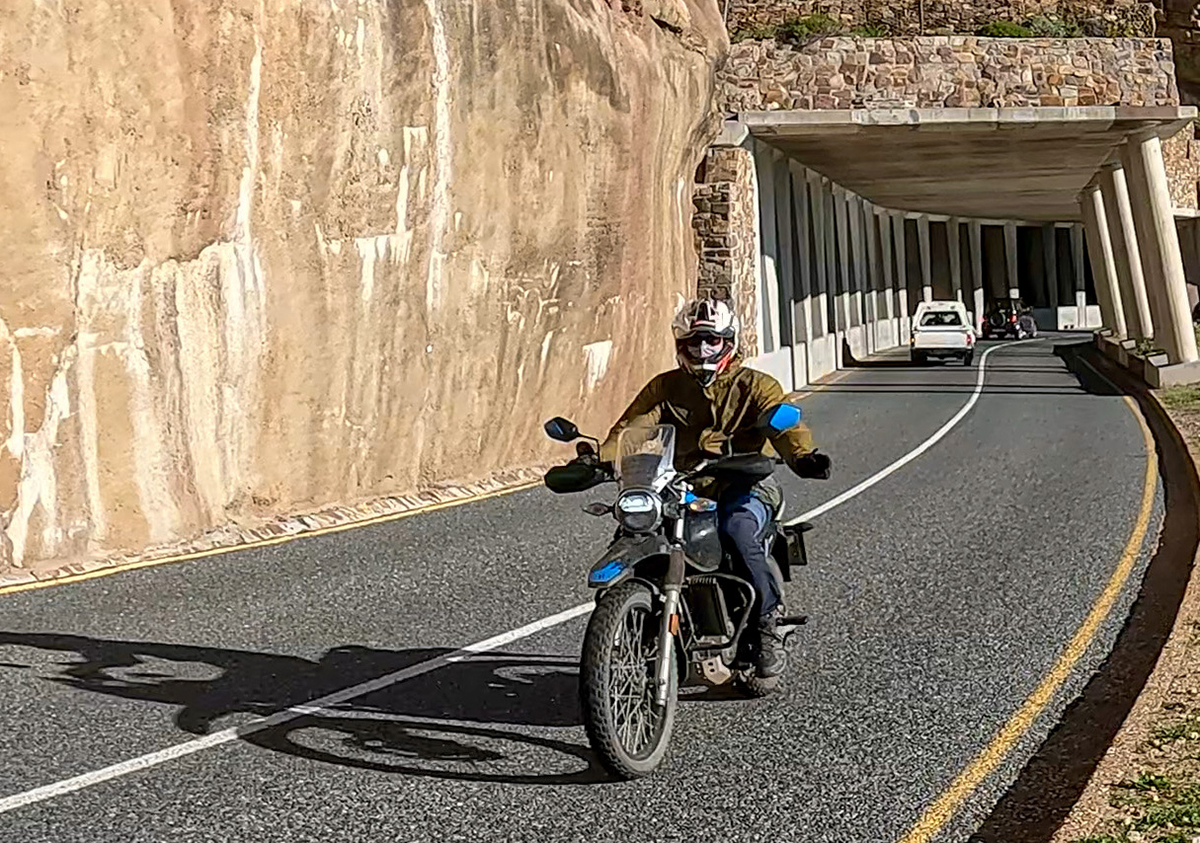
During my visit, I took the opportunity to climb Table Mountain and Lions Head multiple times. I admired the sunset from Signal Hill, Sunset Rock, and Camps Bay. I enjoyed the bohemian vibe of the city and interacted with other travellers.
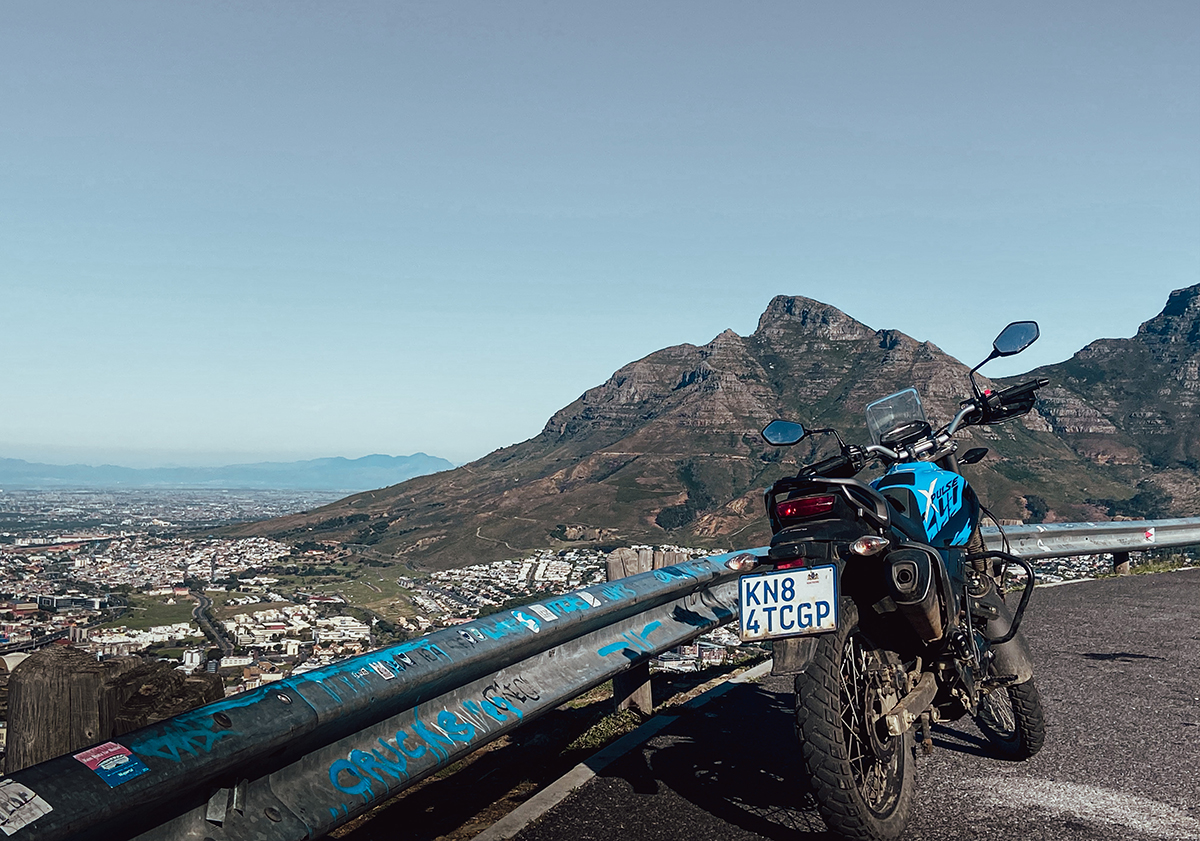
And here, in one of the most beautiful cities in the world, I concluded the first phase of my journey with Lucile. I couldn’t be more grateful for all the epic places she led me to, always resilient, fuel-efficient, and reliable. I ventured into many remote locations, far from civilization, and having a dependable companion like Lucile made my adventures much more enjoyable.
Until next time, fellow adventurers.
Gabriel Turano




